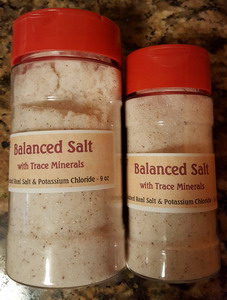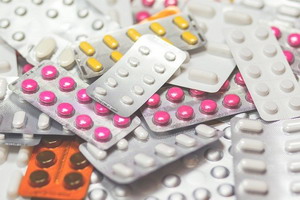You are laying in bed asleep. It is about 2 in the morning and all of a sudden you are awoken by a sharp stabbing pain in your thigh or foot or maybe

even in your forearm and hand. The muscles in the stabbing area are tight as can be and nothing you do seems to stop it. It does not take long before you are fully awake and you realize you are having a muscle cramp. This is not just any leg cramp, but a nocturnal leg cramp. How is that different from a regular cramp? Well primarily because nobody really knows why they happen.
What about cramps in general? The medical and sports world is full of ideas about cramps, but none of the studies have really pointed to a definite culprit.

Some causes are obvious such as a muscle strain injury can cause an immediate muscle spasm, and for us regular folks a spasm and a cramp seem pretty much the same thing. A spasm/cramp is an involuntary forceful contraction of a muscle. A spasm that does not let go is called a cramp. Strain caused cramping is a normal protective mechanism your body uses to keep you from using that injured muscle until it heals. What other causes are there for cramps?
So what makes muscles contract in the first place? Skipping most of the fancy biochemistry, a nerve fires a message to the muscle. This message causes calcium to be released in the muscle which initiates muscle contraction. This highlights two key processes that can be issues with cramps: the nerve message and the muscle contraction process. These two processes involve four essential elements:

electrolytes. For nerves to fire, sodium and potassium have to trade places for a moment and then be pumped back to their starting positions. So sodium and potassium are essential for the nerve firing process. Initiating that firing also involves calcium ions triggering the nerve firing and magnesium regulating the return of calcium to the starting point. Sodium, potassium, calcium and magnesium are the four elements that are essential for the nerves to fire and for the muscles to contract.
The actual muscle contraction involves the movement of calcium into the muscle fiber, and once again magnesium is necessary to move that calcium back to the start of the cycle for relaxation and the next contraction. These four elements are the starting point for most treatments of muscle spasms and cramps. Water is also essential for the proper movement of these elements as well as the

movement inside the muscle fibers. Hence the invention of sports drinks combining water for hydration with electrolytes for proper muscle and nerve function. For any muscle cramping problems, this is the place to start – the electrolytes sodium, potassium, calcium, and magnesium in plenty of water. Personally I don’t think the addition of florescent food dyes is a good move in the sports drink.
The western diet usually provides lots of calcium and sodium as we love dairy products and salty foods. At least we used to love salty foods. All mammals need salt, but modern medicine has formed the belief that sodium is bad for you. This is an unfortunate failure to understand the real picture. Sodium and potassium must be balanced in the body, and we don’t consume the potassium we need so it looks like excess sodium is a problem. It’s not the problem, the lack of potassium is the problem. We are not so big

on magnesium and potassium foods as they mostly all taste bad. Bananas are okay for potassium, but foods like parsley are much better. It is estimated that 80% of Americans are deficient in magnesium. Magnesium is what makes green foods green. It is the central element in chlorophyll, the green stuff in leaves that turns sunlight into sugars. That sounds like it would taste good, but most of those sugars are then tied together to make wood fibers.
The answer here is to get a supplemental source of magnesium and potassium. I use a magnesium – potassium supplement called MgKzyme, and I mix my Real salt with potassium salts. What do I mean by Real salt? We all need salt every day, like 5 to 7 grams a day (1 to 2 teaspoons). But the salt we normally buy at the store contains toxic additives to

keep it from clumping. Groovy sea salts from exotic places all suffer from being made from evaporated seawater. This was not an issue a hundred years ago, but now our oceans have become a toxic waste dump. There is not a single spot on the planet where the seawater is not contaminated with all sorts of industrial chemicals and plastics. So for me, the answer is to mine sea salt from ancient dry sea beds that are uncontaminated by the modern world. Redmonds Real Salt is one such type, as is Himalayan sea salt. I like the taste of Redmonds the best.
A modern cause for leg cramps most people don’t think of is the effect of medications. Cramps are a common side effect of lots of drugs, particularly the biggest selling drug of all times – statin cholesterol drugs. Some osteoporosis drugs like Forteo and Evista trigger leg cramps as well as synthetic estrogen hormones. A surprising drug trigger for cramps is Naproxen, Celebrex, Ibuprofen, and other

non-steroidal anti-inflammatory meds. In the past, I would have thought these would be good to take to relieve the pain of the cramp. Hypertension drugs of the calcium channel blocker type can induce cramps, which now that you know muscle contraction is all about calcium movement will make sense to you. An unfortunate reality of all drugs is that they affect the whole body, not just the target organ you are trying to affect. Mood medications like Celexa and other SSRI’s can cause leg cramps. Cipro antibiotics can also do this. Even sinus meds like Zyrtec can have cramping side effects. Medications have lots of unintended side-effects, and muscle cramps are a common one.
Now for a serious medical concern type of leg cramp. If you get a cramp in one leg while active, like while walking, and it gets worse with use, you may have a blood clot in that leg. The medical term is a DVT or deep vein thrombosis, and it is diagnosed with a Doppler ultrasound test of the leg. This is a sound wave test that measures blood flow to see if it has

become blocked. Along this same line, an artery blockage is possible, particularly if you are diabetic or have used tobacco for years. This is peripheral artery disease and is noticed much like the vein clot. Cold blanched feet and poor arterial pulses in the ankles are also signs of this. Both of these need medical attention, not home remedies. Stubborn cramping issues that can also have medical causes include certain cancers, auto-immune disorders, liver disease, kidney disease, and so on. Fortunately, these are rare.
That mysterious entity I started with, the nocturnal leg cramp, has had a number of theories offered for it. One of the more recent is that it begins as a systemic magnesium deficiency that combines with sleep disturbances and disruptions of the circadian rhythm. Magnesium is of course used along with sleep support supplements like B6, GABA, 5HTP, and melatonin plus techniques for resetting the circadian rhythm.
One mysterious leg cramp remedy brought to me by one of my patients and since sworn to work by many other patients is an old Amish home remedy made

from apple cider vinegar, garlic, and ginger. It is sold commercially under the name “Stops leg & foot cramps.” I hear it tastes nasty. You dilute a tablespoon with 4 ounces of water and down it when you get a cramp.
My sister Jennifer wanted me to mention a couple acupuncture points for muscle cramps. See this page here.
So the basic message here is to make sure you are getting enough electrolytes in your daily diet along with enough water to meet your thirst needs. Make sure you are getting enough potassium to balance your sodium intake. Take magnesium – everybody needs it. Try not to overstrain your muscles. Watch

out for drug side effects. If you do all that and nothing works, then it might be time to check for a possible deeper medical cause for frequent cramps. Understand that the cause of cramping is really vague and hard to figure out. So do all the things you can do first to eliminate those things as possible causes. Maybe even try something nasty tasting like garlic, ginger, and vinegar.
Take care,
David
